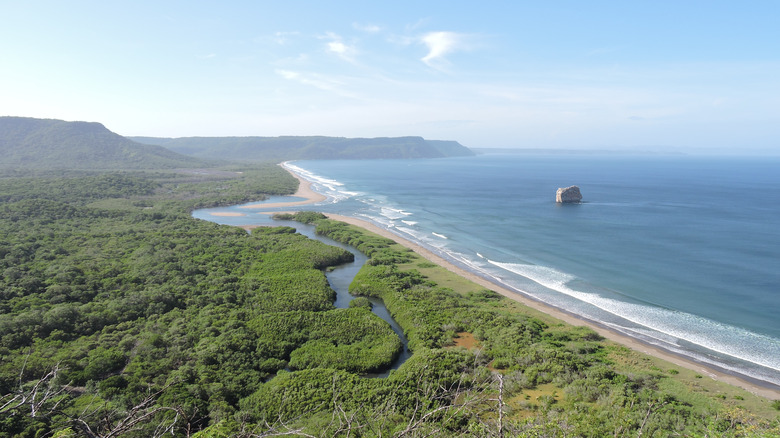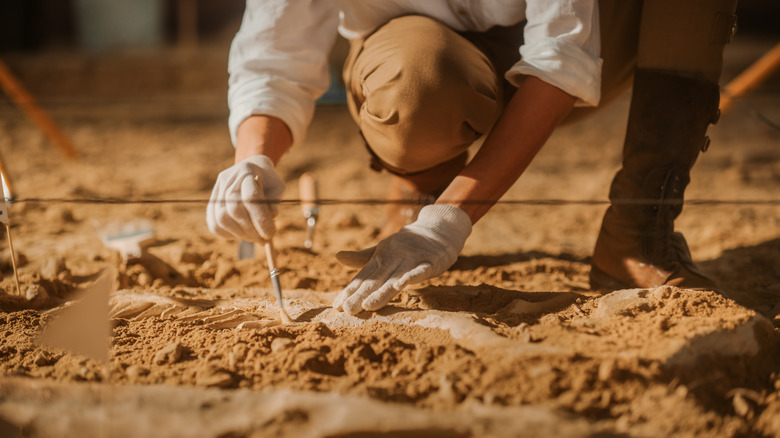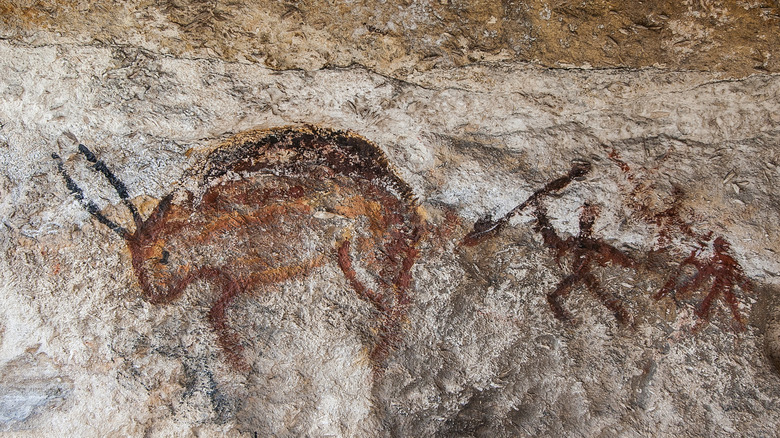The Oldest Body Found In America
The history of the human race dates back millions of years, but the history of humans on the American continent isn't quite as old. Homo sapiens evolved in Africa, namely in the southern half of the continent (via National Geographic). For a while, humans largely stayed in that environment, but by around 180,000 years ago, they started migrating to different areas — first up through Asia and Europe, then over to the Americas (via the Natural History Museum).
But how did prehistoric humans cross massive oceans? The predominant theory says that they crossed the Pacific Ocean at the end of the last ice age, at a time when sea levels were lower, revealing a sort of land bridge between Russia and Alaska, according to the Santa Maria Times. However, an alternate theory suggests that humans used canoes, specifically to move down the Western seaboard of the Americas.
This theory has never been definitively confirmed, but it got an extra piece of supporting evidence when the skeletal remains of a human were discovered on an island off the coast of California in the 1950s (via the National Parks Service). Nicknamed "The Arlington Springs Man," the skeletal remains were eventually dated back to around 13,000 years ago, meaning the bones are the oldest human remains ever found in the Americas, and significantly older than archeologists initially guessed.
The discovery of the Arlington Springs Man
The bones of the Arlington Springs Man were first discovered in 1959, according to the Santa Maria Times. Found on the Californian island of Santa Rosa, the bones don't comprise a full skeleton. Instead, only femur bones were uncovered. Though further investigation of the site has been done in the years since, no further human remains have been found (via West of the West).
Because the bones were discovered nearly 40 feet beneath the surface, the archeologist who unearthed them, Phil C. Orr, suspected that they were about 10,000 years old. However, it wasn't until 1987 that radiocarbon dating techniques had developed enough that the bones could be tested, revealing the bones were even older than originally anticipated, at around 13,000 years old.
Unfortunately, the bones haven't necessarily stayed in the greatest shape over the years, which has limited what archeologists have been able to discover about the Arlington Springs Man — or, maybe, the Arlington Springs Woman. Initially determined to be male when the bones were carbon dated, scientists reevaluated and deemed the person to be a woman, per the L.A. Times. But by 2006, scientists flip-flopped back again after uncovering more of Orr's original notes, which revealed the bone's femur head was quite large. Because of its size, that femur head — which had gone missing or deteriorated since 1959 — probably belonged to a man.
What life was like for the Arlington Springs Man
Lots of things were different in the world of the Arlington Springs Man. For instance, though his remains were found on what is now Santa Rosa Island, at the time, this chunk of land would have been part of a bigger island called Santarosae, parts of which have now been swallowed by rising sea levels (via West of the West). On that island, the Arlington Springs Man would have lived with and possibly hunted plenty of unique animals, including pygmy mammoths, according to the Santa Maria Times.
But how did he get on the island in the first place? He must have had a canoe to be able to reach the island, which is why the existence of the bones provides evidence that humans may have migrated down the western seaboard by boat, according to the National Park Service.
However, whether there are more remains to be found in the area — or older remains elsewhere on the continent — remains to be seen. According to the land bridge migration theory, humans likely started arriving in the Americas as many as 20,000 years ago. If that theory is true, there could be even older skeletons or bone fragments just waiting to be discovered by scientists.


